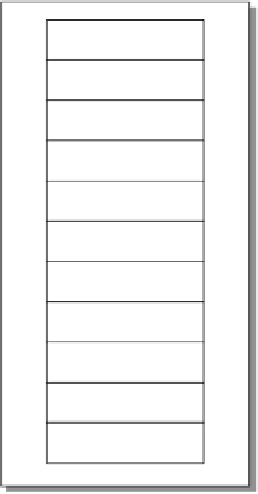Information Technology Reference
In-Depth Information
AX (Accumulator)
AH
AL
BX (Base register)
8 bits
8 bits
CX (Count register)
BH
BL
DX (Data register)
SP (Stack pointer)
8 bits
8 bits
CH
CL
BP (Base pointer)
SP (Source pointer)
8 bits
8 bits
DI (Destination index)
DH
DL
CS (Code segment)
8 bits
8 bits
DS (Data segment)
*
*
*
*
O
D
I
T
S
Z
*
A
*
P
*
C
SS (Stack segment)
Flags
Figure A.2
8086/88 registers
Addressing registers
The addressing registers are used in memory addressing operations, such as the holding the
source address of the memory and the destination address. These address registers are named
BP, SP, SI and DI, which are:
•
SI is the source index. This is used with extended addressing commands.
•
DI is the destination index
.
The destination is used in some addressing modes.
•
BP is the base pointer.
•
SP is the stack pointer.
Status registers
Status registers are used to test for various conditions in an operation, such as 'is the result
negative', 'is the result zero', and so on. The two status registers have 16 bits and are called
the instruction pointer (IP) and the flag register (F):
•
IP is the instruction pointer. The IP
register contains the address of the next instruction of
the program.
•
Flag register. The flag register holds a collection of 16 different conditions. Table A.1
outlines the most-used flags.
Segments registers
There are four areas of memory called segments, each of which are 16 bits and can thus ad-
dress up to 64 KB (from
0000h
to
FFFFh
). These segments are:
•
Code segment (CS register) - defines the memory location where the program code (or













